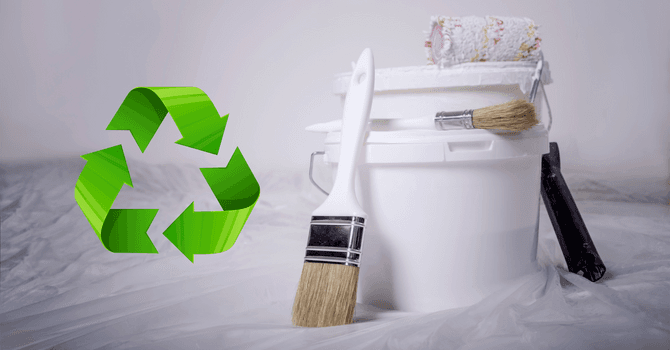How to Avoid Winter Plumbing Issues - 4 Essential Precautions
By Amanda Harvey
Updated on October 28, 2024

Imagine arriving home in the dead of winter after a long day of work and all you’re hoping for is a hot bath. You turn on the faucet and prepare for steaming water to stream out, but nothing happens. What’s the problem? Are your pipes frozen? Is something obstructing water flow? Is your water heater dead? When winter rears its ugly head, plumbing problems escalate, making it difficult to pinpoint where the issues might be coming from.
With all this in mind, it’s crucial to consider concrete ways to avoid plumbing problems and the likelihood of limited water accessibility. If you’re not a trained plumber, rest assured, we have some tips even the novice homeowner can follow and implement.
What Are Essential Winter Plumbing Tips Fit for Every Household?

1- Insulate your pipes
Insulating your pipes is a must for the winter months, and it should be done well before the cold front sets in. Taking necessary measures to maintain pipes and drains is especially important in older homes, where time-worn systems paired with freezing conditions will render pipes extremely vulnerable. Pipes can easily freeze or burst as a result of freeze-and-thaw cycling. Not only is this issue difficult to manage, but if left for too long, it can be costly.
Maintaining your pipes periodically is a necessary chore in both the winterization process and spring cleaning. Start by looking at any exposed pipes around the outside of or throughout your home. If you find any hoses still sitting outside, make sure to drain them and move them indoors. If there are specific pipes with a history of freezing, take care of those first. Exposed pipes should be insulated with pipe sleeves, which can be purchased at a local hardware store.
If you’re not sure which pipes tend to freeze first, take the necessary precautions and insulate all pipes. However, pay close attention to unheated or under-heated areas. These include basements, garages, crawl spaces, and attics, as well as under sinks. If you can’t find pipe sleeves, you can always fashion some yourself out of old clothing, sweaters, or even newspaper. In a pinch, be creative!
2- Prevent leaky pipes
Leaking pipes are another troublesome problem. Even the smallest leaks can cause significant damage, deteriorating ceilings, floors, walls, furniture, and other surfaces. Stagnant water can also cause mould and mildew growth which are serious health risks.
Leaks lead to damage during the spring and summer months but are even more detrimental when it’s cold out. The already existing holes are exacerbated by frozen pipes, expanding when pipes freeze. For this reason, taking care of leaks as soon as possible is an absolutely crucial winter maintenance tip.
Checking for leaks is fairly easy and below is a list of places to check as frosty weather begins to set in:
Sinks
Check the pipes beneath the bathroom, kitchen, laundry room, and any other sinks in your home. If you notice a musty smell, this is a definite sign of mould and more than likely, a leaky drainpipe. Drains should be checked every few months to spot any major issues.
Toilets
If you find a puddle of water behind or near your toilet, this could be indicative of an already developing plumbing problem or leakage. Look carefully at the piping connected to your toilet for small leaks.
Showers and Bathtubs
The piping hooked to your shower gets plenty of use and thus may wear down quite easily. Naturally, this can lead to leaks. Bathtubs are another major culprit, as the drain faces significant pressure post-bath use. Check any drain pipes for signs of drips or leaks. Alternatively, if you have a basement, this may be a good place to check for leaking shower or bathtub piping.
3- Take stock of your water heater
As we mentioned in our introduction, taking hot showers and baths is a common luxury during those chilly months. With this in mind, before autumn even sets in, we suggest having your water heater checked for any existing buildup or corrosion. As is common knowledge, water heaters can present a significant amount of rust and sediments.
If either of these things build up or collect in your water heater, the hot water flow can be both disrupted and weakened. Not only this, rust can lead to cracks forming on the heater’s metal surface and, without a doubt, will lead to leaks. Unfortunately, it may be difficult for a novice handyperson to know what to do with a water heater. This is why you must get in touch with a plumbing contractor who can inspect the heater for you and perform the maintenance required.
4- Know where your water main is located
Although this is last on our list of winter plumbing tips, it’s something that every homeowner should be aware of. Knowing where your water main is located inside your home is critical, as you may need to shut it off in the event of an emergency.
After following all of our tips, you may still experience a major plumbing problem, including bursting or freezing pipes. If either of these things occurs, the water valve is your last resort, so know where the main is located and how to use it.
Commonly, the water main is found in the basement, laundry room, or crawl space, on the wall nearest to the street. There are generally two gate valves, which can be turned off when rotated clockwise.
Again, turning off these valves will only be necessary in the case of an emergency. However, if you follow all of our initial tips, it shouldn’t come to this. If things spiral out of control, call a professional.
FAQ Winterproofing House Plumbing

How to keep your pipes from freezing in the winter?
To keep your pipes from freezing, insulate them with foam sleeves, especially the ones found in unheated areas like garages, basements, and attics. In case of unseasonably cold temperatures, leave taps running, a small trickle of water should suffice, and keep the temperature indoors at a minimum in all rooms where there are exposed pipes.
How to winterize house plumbing?
With the start of winter, unhook your outdoor pipes, shut off the faucets, and install slip-on faucet covers. Inside, insulate your pipes with foam sleeves and check all weak spots, such as joints or draft-exposed pipes.
At what temperature do pipes freeze?
Pipes can freeze when the temperature outside dips below 0°C (32°F). However, the real risk of freezing is higher when temperatures below -6°C (20°F) are recorded, especially if the pipes are poorly insulated or exposed.
What to do if my pipes freeze?
If your pipes freeze, start by opening the related water tap to alleviate pressure. Use a hair dryer, warm towels, or a portable space heater to slowly heat the pipe, starting with the section closest to the faucet and working your way toward the frozen part of the pipe. If you aren’t able to thaw the pipe or believe it might be cracked, call in a professional plumber.
Looking for something else?
Related articles
The latest industry news, interviews, technologies, and resources.

Editorial Team
•27 May 2025
There’s something satisfying about fixing things around your home. With a few tools, some determination, and a bit of YouTube guidance, you can sometimes fix things without waiting for outside help.

Cynthia Pigeon
•07 Nov 2023
Have you just made the leap and purchased your dream lakefront house or chalet, but you are just lacking an essential element to fully enjoy it? Now, adding a floating dock might just be the idea of the century to bring about a bit more fun to your evenings with your friends and make your family's access to water sports that much easier.

Editorial Team
•23 Feb 2024
For a few years now, Boomerang Paint has been increasingly solicited for interior renovation and decoration projects. The reason being its green characteristics and excellent value for money. If you’re looking for eco-friendly interior paint, opting for recycled paint is the best decision you can make. Learn all about this type of product in the following section.

Équipe éditoriale
•07 Nov 2023
The anticipation of the incoming heat in the first few weeks of summer would drive anyone to want a pool, no? There’s no doubt that this prospect could lead you to dream of moments where you’ll be drinking sangria on an inner tube with your legs up and your hair in the wind.

Amanda Harvey
•24 Oct 2024
Buying a new home is an exciting venture, with endless possibilities laid out in front of you. Of course, everyone has an idea of their ideal home and for most this includes the extra space that a basement encompasses. With the right basement and the assistance of a good contractor, you could host an alternative living area, game room, a home gym or a place for washer and dryer. When shopping for a house, it can be difficult to tell the condition a basement is in; so how do you figure out what to look for?